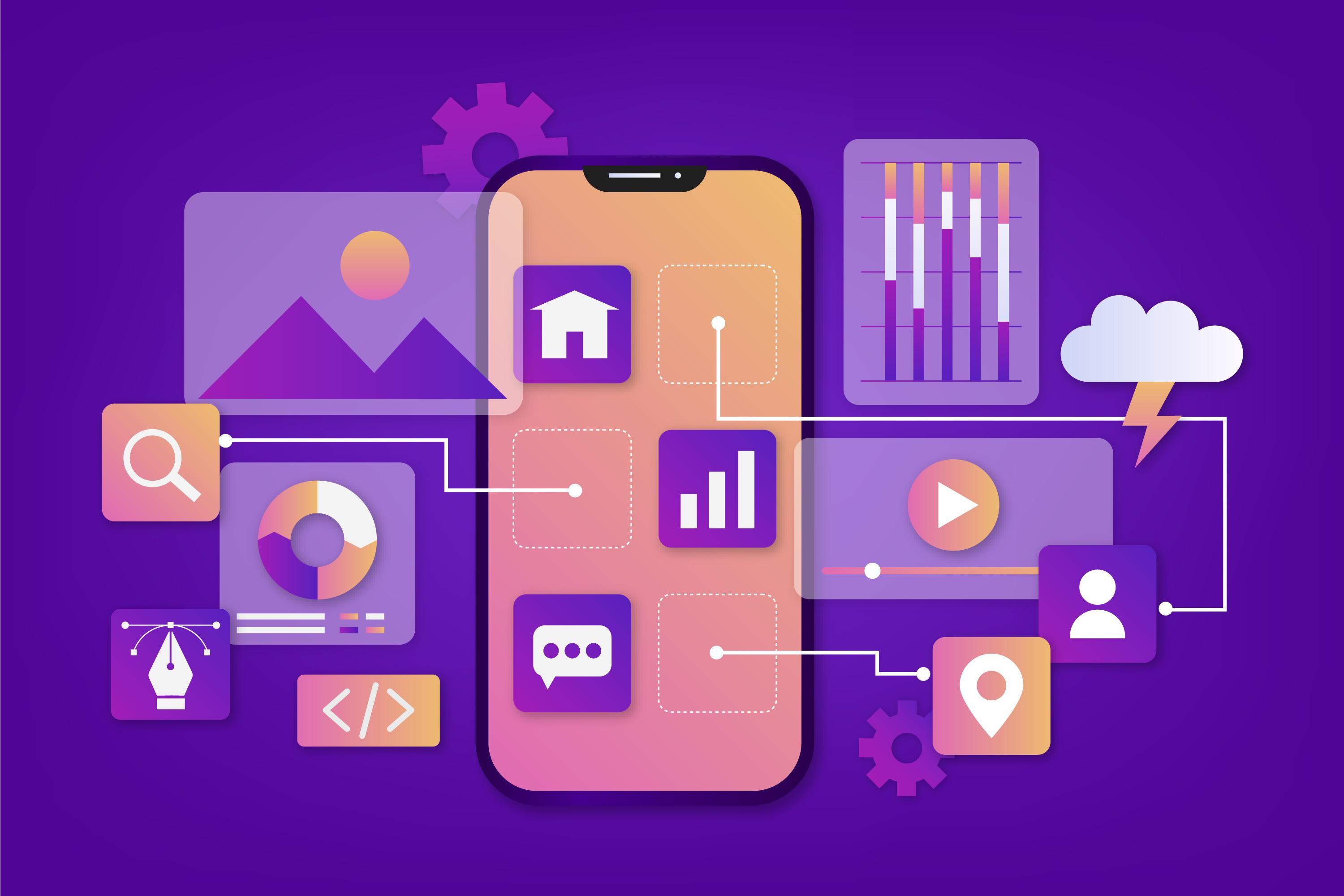Mobile app testing stands as a linchpin in the realm of app development, wielding the power to transform a promising concept into a seamlessly functioning digital marvel. The journey of creating a mobile application transcends mere coding and design; it demands a meticulous approach to quality assurance. Understanding the paramount importance of this phase is essential — it serves as the litmus test for an application’s viability, reliability, and user satisfaction.
Best practices in mobile app testing revolve around a multifaceted strategy, ranging from ensuring cross-device compatibility to fine-tuning the minutiae of user interactions through usability testing. The integration of automated testing not only expedites the process but also lends a layer of consistency to the evaluation, fostering reliability in the app’s performance. Delving deeper, performance testing becomes the crucible where the app’s mettle is tested under varying conditions, ensuring its responsiveness and resilience. Security testing, a sentinel in the process, fortifies the app against potential threats, establishing a robust defense for user data.
User Acceptance Testing (UAT), involving real users in the evaluation process, breathes life into the app, aligning it closely with user expectations and preferences. Real-world testing scenarios, often overlooked, simulate the diverse environments where the app will unfold, revealing unforeseen challenges and enhancing its adaptability. Continuous improvement echoes the dynamic nature of technology, urging developers to evolve their testing strategies in tandem with shifting landscapes.
In conclusion, these best practices amalgamate into a comprehensive guide, promising not just a bug-free app but an immersive, reliable, and secure experience for users. The journey from conceptualization to a successful app launch is incomplete without the meticulous embrace of mobile app testing, a process that elevates a digital creation from mere functionality to user-centric excellence.
Table of Contents

Effective mobile app testing strategies
Effective mobile app testing strategies are crucial for the success of any mobile application. In the dynamic landscape of mobile development, where devices, operating systems, and user expectations constantly evolve, having a well-defined testing approach is paramount. The first key strategy involves thorough testing on multiple devices, considering various screen sizes, resolutions, and hardware specifications. This ensures that the app delivers a consistent and seamless experience across a diverse range of devices.
Usability testing, another critical aspect, focuses on the user interface and overall user experience, helping developers fine-tune the app’s design for optimal user engagement. Automated testing emerges as a time-saving strategy, allowing for the efficient execution of repetitive test cases and ensuring consistency in the testing process.
Performance testing is indispensable, assessing the app’s behavior under different conditions such as high traffic and low connectivity. This strategy guarantees that the app remains responsive and reliable, even in challenging scenarios, ultimately enhancing user satisfaction. Security testing, in an era of increasing cyber threats, is paramount for safeguarding user data and maintaining the app’s integrity. User Acceptance Testing (UAT) involves engaging real users in the testing process, providing valuable insights into user preferences and expectations.
In summary, effective mobile app testing strategies encompass a holistic approach, addressing compatibility, usability, performance, security, and user feedback. By adopting these strategies, developers can identify and rectify potential issues early in the development process, ensuring the delivery of a high-quality mobile app that meets user expectations and stands out in the competitive app market.
Testing mobile apps for optimal performance
Testing mobile apps for optimal performance is a multifaceted process crucial to the success of any application in today’s competitive landscape. This facet of mobile app testing involves evaluating the application’s responsiveness, speed, and overall efficiency under various conditions. To achieve optimal performance, developers must conduct thorough testing across different devices, operating systems, and network scenarios. Performance testing helps identify potential bottlenecks, memory leaks, or other issues that could degrade the app’s responsiveness.
Load testing, a subset of performance testing, assesses how well the application performs under expected user loads, ensuring it can handle peak usage without compromising functionality. Additionally, stress testing pushes the app to its limits, examining how it behaves under extreme conditions to uncover vulnerabilities and weaknesses.
Continuous monitoring of performance metrics is vital to detect any degradation over time or in response to updates. By prioritizing performance testing throughout the development lifecycle, developers can guarantee that their mobile apps not only meet but exceed user expectations, providing a seamless and satisfying user experience that fosters loyalty and positive reviews.
Ensuring quality in mobile app development
Ensuring quality in mobile app development is paramount for the success and sustainability of any application in today’s competitive digital landscape. Quality goes beyond mere functionality; it encompasses user experience, performance, security, and adherence to industry standards. In the fast-paced world of mobile technology, where user expectations are constantly evolving, a commitment to quality becomes a strategic imperative. Rigorous testing throughout the development lifecycle is the linchpin of this commitment. By employing comprehensive testing methodologies, developers can identify and rectify issues early on, preventing potential pitfalls that could compromise the app’s success.
From usability and performance testing to security assessments, each facet contributes to a holistic quality assurance approach. User satisfaction is intricately linked to the quality of the app, making it imperative to prioritize testing to meet or exceed user expectations. In essence, ensuring quality in mobile app development is not merely a checkbox in the development process; it’s a continuous journey, an ongoing dedication to delivering excellence that resonates with users and sets the foundation for long-term success in the dynamic world of mobile applications.
Mobile application quality assurance
Mobile application quality assurance is a pivotal aspect of the software development lifecycle, dedicated to ensuring that mobile apps meet the highest standards of performance, functionality, and user satisfaction. It involves a systematic and comprehensive evaluation of every facet of an application, from its user interface to its underlying codebase. The primary goal is to identify and rectify any potential issues or inconsistencies that could compromise the user experience.
Mobile application quality assurance encompasses a variety of testing methodologies, including functional testing to validate that each feature works as intended, usability testing to assess the app’s user-friendliness, performance testing to gauge its responsiveness under different conditions, and security testing to fortify against potential vulnerabilities. The process is iterative, involving continuous testing and refinement throughout the development cycle to ensure that the final product not only meets but exceeds user expectations.
By prioritizing mobile application quality assurance, developers can instill confidence in their users, build brand loyalty, and ultimately contribute to the overall success of the application in an increasingly competitive digital landscape.
Understanding Mobile App Testing
Understanding mobile app testing is pivotal in the ever-evolving landscape of digital technology. Mobile applications have become integral to our daily lives, serving as the primary gateway to information, entertainment, and services. However, the seamless functionality and user satisfaction that users expect are not mere coincidences but the result of rigorous testing processes. Mobile app testing is a comprehensive approach aimed at ensuring that applications perform optimally across diverse devices, operating systems, and usage scenarios. It involves evaluating not only the basic functionalities but also the user interface, performance, security, and overall user experience.
The significance of mobile app testing cannot be overstated. As the digital ecosystem continues to grow, users demand flawless and intuitive experiences from their mobile apps. Any glitch or inconsistency can lead to frustration, negative reviews, and, ultimately, the failure of an app in the competitive market. Effective testing strategies encompass various methodologies, including manual testing by quality assurance professionals and automated testing to expedite repetitive processes. Usability testing focuses on the user interface, ensuring that the app is not only functional but also intuitive and user-friendly.
Performance testing evaluates how an app behaves under different conditions, ensuring it remains responsive and reliable even in high-traffic scenarios. Security testing, a critical aspect, safeguards sensitive user data by identifying and rectifying vulnerabilities. User Acceptance Testing (UAT) involves real users, providing valuable insights into their preferences and expectations.
Real-world testing scenarios are essential to simulate the myriad environments in which users engage with mobile apps, uncovering potential issues before they reach the end-user. Continuous improvement is a guiding principle, recognizing that mobile app testing is an iterative process that must adapt to changing technologies, user behaviors, and industry standards.
In conclusion, understanding mobile app testing is not just a technical necessity but a strategic imperative for developers and businesses. It is the linchpin that ensures the success and longevity of mobile applications in a competitive and dynamic market. By embracing and implementing best practices in mobile app testing, developers can deliver robust, high-quality applications that not only meet but exceed user expectations, fostering trust, loyalty, and sustained success in the digital realm.
Choosing the Right Testing Tools
Choosing the right testing tools is a pivotal aspect of mobile app development, influencing the overall efficiency and effectiveness of the testing process. In today’s dynamic landscape, where numerous testing tools are available, making an informed decision is crucial. The selection process should align with the specific needs of your project, considering factors such as the nature of the application, testing objectives, and the skill set of your team.
Start by identifying the testing requirements unique to your mobile app. Consider whether functional testing, performance testing, security testing, or a combination is necessary for comprehensive coverage. Additionally, assess the compatibility of the testing tools with the platforms and devices your app targets, ensuring a seamless testing experience across diverse environments.

Furthermore, evaluate the scalability and flexibility of the testing tools. As your app evolves, the testing infrastructure should accommodate growth and changes in the development process. A scalable testing solution ensures that your testing efforts remain efficient even as the complexity of your app increases.
Ease of integration is another critical factor. The chosen testing tools should seamlessly integrate with your existing development and continuous integration/continuous deployment (CI/CD) pipelines. This integration streamlines the testing workflow, allowing for automated and continuous testing, which is essential for rapid and reliable app releases.
Consider the learning curve associated with the testing tools. Opt for tools that align with the expertise of your testing team or are easy to learn. This ensures a smooth onboarding process and reduces the time spent adapting to new tools, allowing your team to focus on delivering high-quality testing outcomes.
In conclusion, the process of choosing the right testing tools demands careful consideration of various factors to meet the unique requirements of your mobile app development project. By making informed decisions, you pave the way for a robust testing strategy that contributes significantly to the overall success and quality of your mobile application.
Performance Testing for Optimal Functionality
Performance testing is an integral aspect of mobile app development, ensuring optimal functionality and user satisfaction. This critical phase involves evaluating how well an application performs under various conditions, including high traffic, low connectivity, and heavy usage. The primary goal is to identify and address performance bottlenecks, ensuring that the app remains responsive and reliable even in challenging scenarios. Performance testing goes beyond assessing speed; it encompasses factors like resource usage, scalability, and stability.
By conducting thorough performance tests, developers can pinpoint issues such as slow response times, memory leaks, or server bottlenecks that may negatively impact the user experience. Implementing performance testing not only enhances the overall functionality of the app but also contributes to customer retention and positive reviews.

Users expect apps to work seamlessly, regardless of external factors, and performance testing is the key to meeting these expectations. It is a proactive approach that allows developers to optimize the app’s performance before it reaches the end-users, ensuring a smooth and responsive experience that aligns with the ever-increasing demands of today’s tech-savvy audience.
FAQs
- Why is mobile app testing important?
- Mobile app testing is crucial to identify and fix issues before they reach end-users, ensuring a seamless user experience.
- What are the key components of a test plan?
- A test plan includes test objectives, scope, resources, schedule, and testing methods.
- How does automated testing enhance efficiency?
- Automated testing speeds up the testing process, reduces human errors, and allows for repetitive tests to be executed quickly.
- Why is collaboration essential in testing teams?
- Collaboration fosters effective communication, leading to better understanding and resolution of testing challenges.
- What are the common pitfalls in mobile app testing?
- Common pitfalls include insufficient testing, overlooking user experience, and neglecting security, among others.


